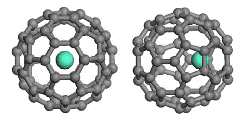Department of Chemistry
Resolving the HONO formation mechanism in the ionosphere via ab initio molecular dynamic simulations
Date of this Version
2016
Citation
PNAS, April 26, 2016, vol. 113, no. 17, 4629–4633
Abstract
Solar emission produces copious nitrosonium ions (NO+) in the D layer of the ionosphere, 60 to 90 km above the Earth’s surface. NO+ is believed to transfer its charge to water clusters in that region, leading to the formation of gaseous nitrous acid (HONO) and protonated water cluster. The dynamics of this reaction at the ionospheric temperature (200–220 K) and the associated mechanistic details are largely unknown. Using ab initio molecular dynamics (AIMD) simulations and transition-state search, key structures of the water hydrates—tetrahydrate NO+(H2O)4 and pentahydrate NO+(H2O)5—are identified and shown to be responsible for HONO formation in the ionosphere. The critical tetrahydrate NO+(H2O)4 exhibits a chainlike structure through which all of the lowest-energy isomersmust go. However, most lowest-energy isomers of pentahydrate NO+(H2O)5 can be converted to the HONO-containing product, encountering very low barriers, via a chain-like or a three-armed, star-like structure. Although these structures are not the global minima, at 220 K, most lowest-energy NO+(H2O)4 and NO+(H2O)5 isomers tend to channel through these highly populated isomers toward HONO formation.


Comments
Copyright 2016 The Authors.